|
Lighthouse Display Case
Page 1
This page by Jerry Wilkinson
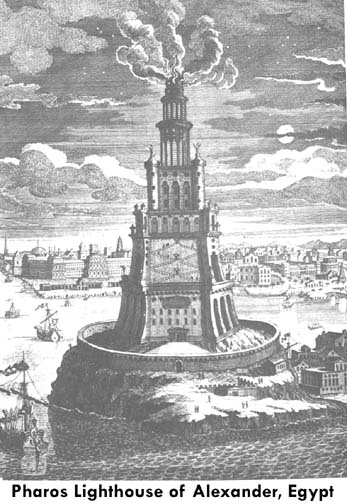
An artist's rendition of the early navigation
aid for the Roman Empire.
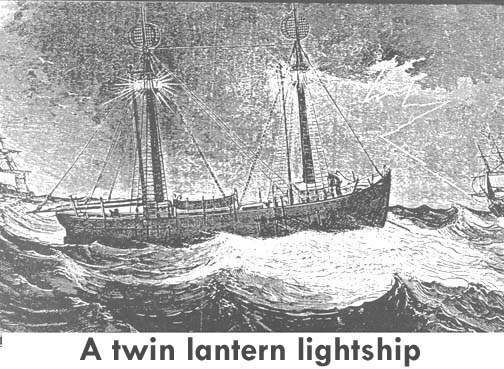 At one time or another, five lightships served
in the Florida Keys, the Aurora Borealis in the Dry Tortugas, the
Sand Key Honey, the Key West Lightboat (name unknown), and the Cesar
and Florida at Carysfort Reef.
At one time or another, five lightships served
in the Florida Keys, the Aurora Borealis in the Dry Tortugas, the
Sand Key Honey, the Key West Lightboat (name unknown), and the Cesar
and Florida at Carysfort Reef.
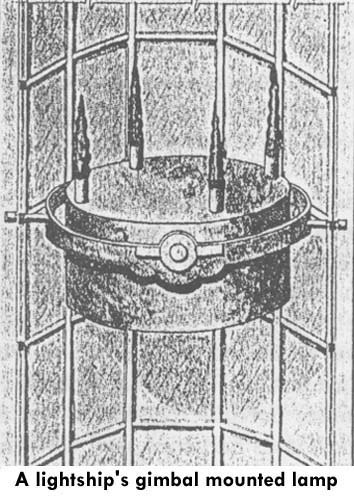 The lanterns were oil lamps, usually whale-oil,
and mounted on a compound gimbal to maintain the lamps level with the roll
and pitch of the ship.
The lanterns were oil lamps, usually whale-oil,
and mounted on a compound gimbal to maintain the lamps level with the roll
and pitch of the ship.
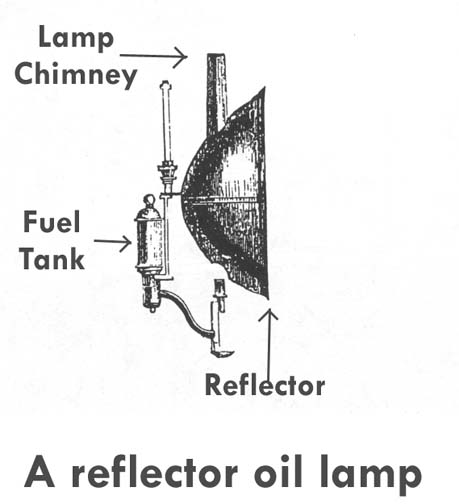 Generally, all lamps used some variety of reflective
device. In the above drawing, the flame was centered in front of the reflector
at the correct distance. The Winslow Lewis patented Argand lamp with a
14-inch reflector was typical. Winslow Lewis also placed an optical lens
in front of the reflector for magnification. Frequent cleaning
was necessary.
Generally, all lamps used some variety of reflective
device. In the above drawing, the flame was centered in front of the reflector
at the correct distance. The Winslow Lewis patented Argand lamp with a
14-inch reflector was typical. Winslow Lewis also placed an optical lens
in front of the reflector for magnification. Frequent cleaning
was necessary.
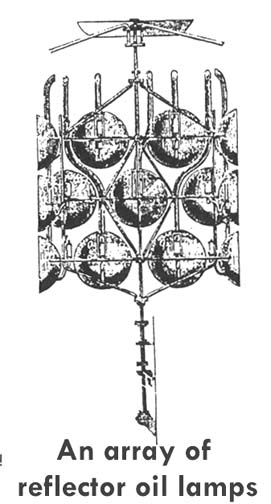 An array, or bank, of lamps was frequently
used for additional light. Various sizes of arrays were used depending
on whether it was a long distance coastal light or a short distance marker,
or beacon light.
An array, or bank, of lamps was frequently
used for additional light. Various sizes of arrays were used depending
on whether it was a long distance coastal light or a short distance marker,
or beacon light.
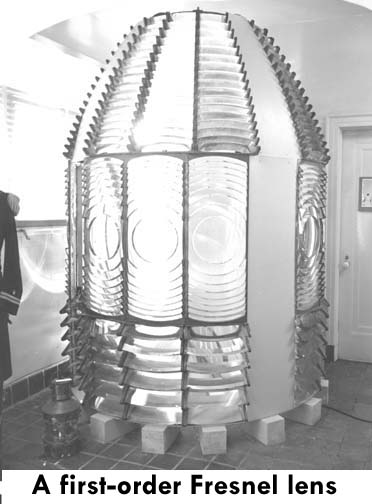 Various fuels have been used to produce the
light. Whale-oil, kerosene and acetylene were the most common. Various
forms of batteries and charging systems were tried and solar is generally
preferred today. Various lamp and reflector combinations were tried, but
the Fresnel (pronounced Fer-NELL) was by far the best with fuel oil lamps,
also the most expensive. There were six sizes (orders) with the "first-order"
being the largest. The Fresnel lens is not used with today's solar powered
systems.
Various fuels have been used to produce the
light. Whale-oil, kerosene and acetylene were the most common. Various
forms of batteries and charging systems were tried and solar is generally
preferred today. Various lamp and reflector combinations were tried, but
the Fresnel (pronounced Fer-NELL) was by far the best with fuel oil lamps,
also the most expensive. There were six sizes (orders) with the "first-order"
being the largest. The Fresnel lens is not used with today's solar powered
systems.
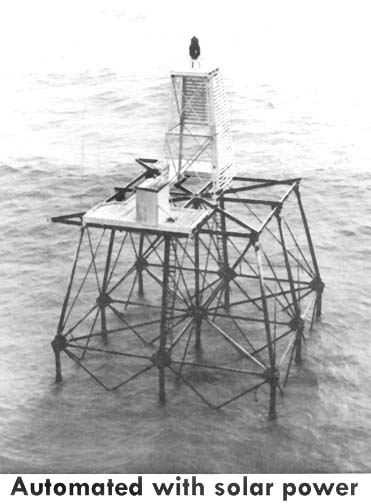 A typical present-day solar powered automated
lighthouse (Rebecca Shoal Lighthouse).
A typical present-day solar powered automated
lighthouse (Rebecca Shoal Lighthouse).
Now for the Florida Keys lighthouses.
Continued on Page 2
Go to Page 2, or
Return to the Transportation Room
|